Visiting DOMunder- An Underground Archaeological Experience in Utrecht
Purchases made through links earn us a small commission, at no extra cost to you.
Visitors to Utrecht’s Domplein, the cathedral square, may be unaware that as they admire the historic Dom Church and soaring Dom Tower they are walking above 2,000 years of buried history.
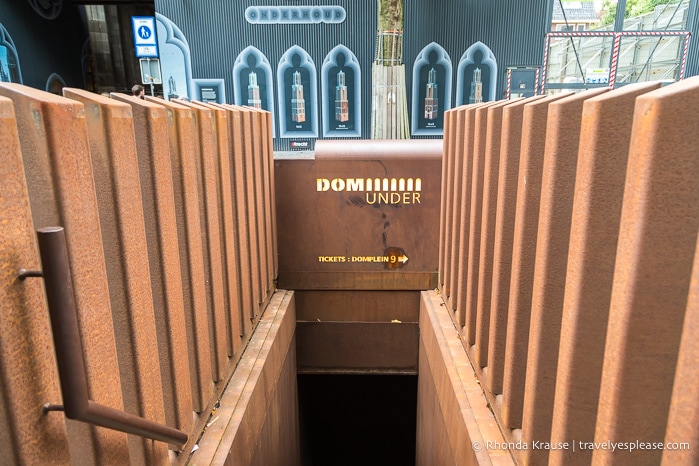
Below the square are the crumbled ruins of what once stood on this spot- a Roman fortress and the cathedral’s nave. This fascinating part of Utrecht’s history can be discovered while visiting the underground ruins as part of a unique archaeological experience known as DOMunder.
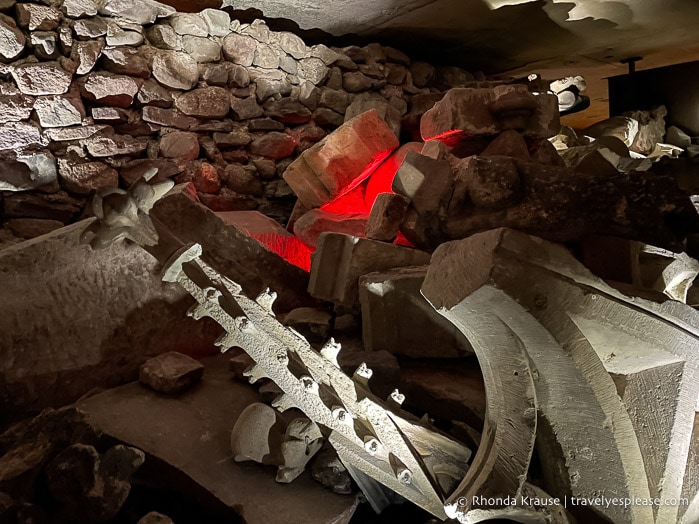
Since I love archaeology and ruins, the DOMunder tour was one of the activities I was most looking forward to during my day in Utrecht. Here’s an explanation of what DOMunder is, what my experience was like, and my DOMunder review.
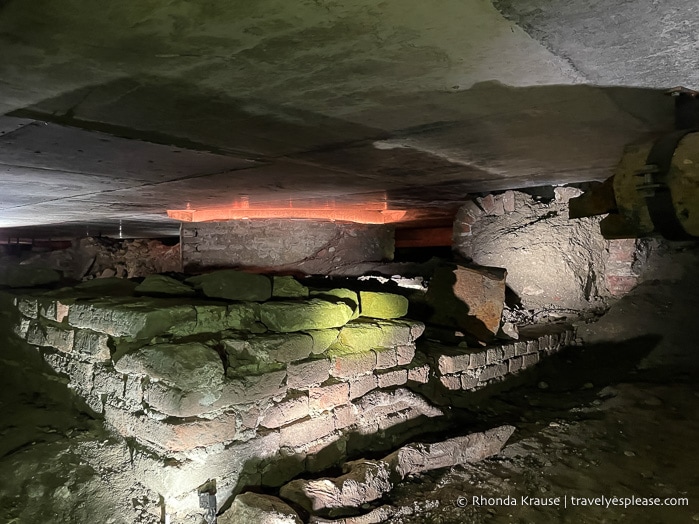
What is DOMunder?
DOMunder in Utrecht is an archaeological attraction of subterranean ruins that represent 2,000 years of history of the Domplein.
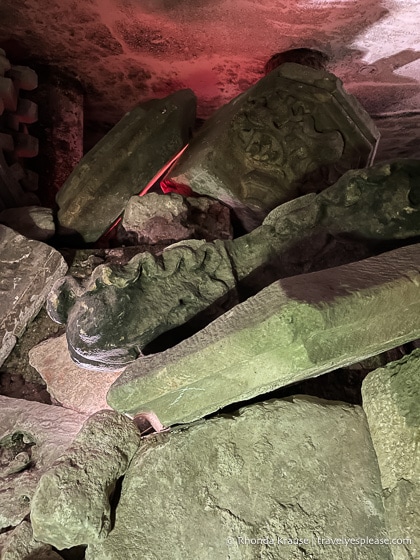
Visitors to DOMunder get to play the role of an archaeologist by going underground and examining the excavated remains with an interactive flashlight and audioguide. When the flashlight is shone on a sensor in the ruins, it activates a narration in the headphones about that object and how it relates to Utrecht’s history. There are 30 points of interest you can learn about during the tour.
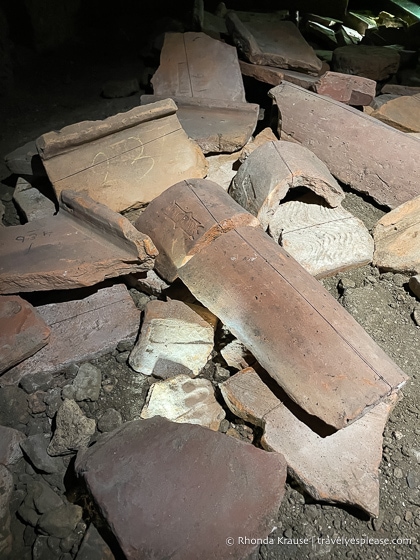
In addition to the archaeological exploration, there’s also a multimedia presentation that virtually transports visitors to Utrecht’s Roman past and through the Middle Ages.
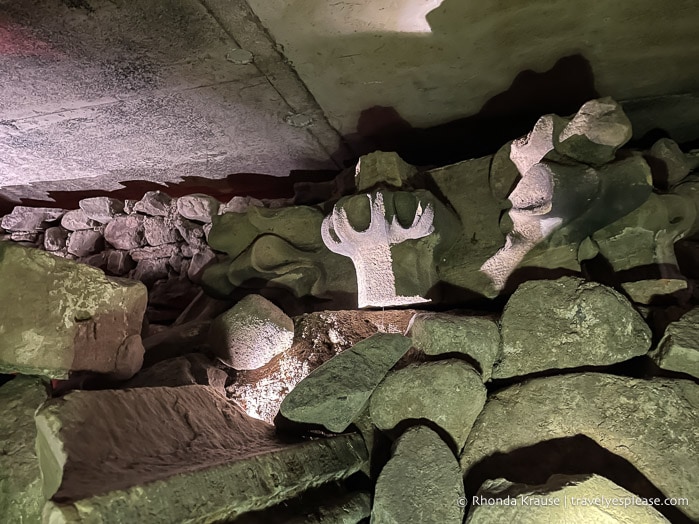
My Experience on the DOMunder Discovery Tour
The DOMunder Discovery Tour started in a building across from the Dom Tower where participants were divided into groups according to language and assigned a guide.
Here the guide gave us a presentation about the history of the Domplein, from its origin as a Roman castellum, then a religious centre with chapels and churches, and eventually the site of a Gothic cathedral (the Domkerk). The guide laid out some diagrams of the Domplein on the floor so we could visualize the different structures that stood on the square over the years.
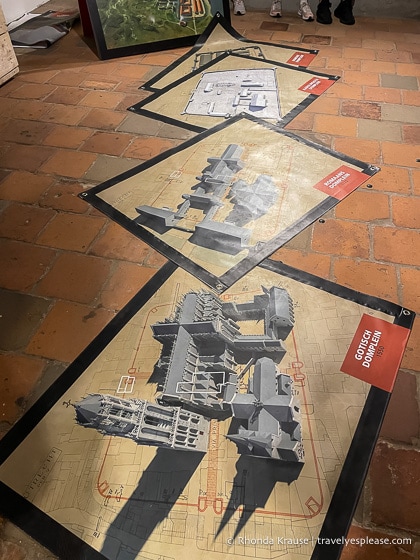
Several eras of constructing buildings on the same site resulted in a layered history that can now be seen below the Domplein. The guide showed us a picture of the distinct tiers of different construction materials used in the Roman times, the early Middle Ages, and the Middle Ages so we could look for examples of these eras when we headed underground for the tour portion.
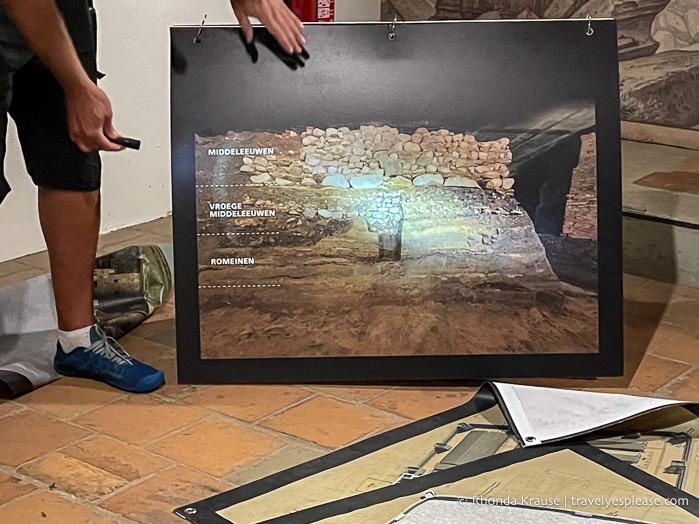
Once the educational introduction was done, the group walked to the Domplein and descended a staircase into the darkness below the square. We were given our special flashlight and headphones and then gathered for the short multimedia presentation.
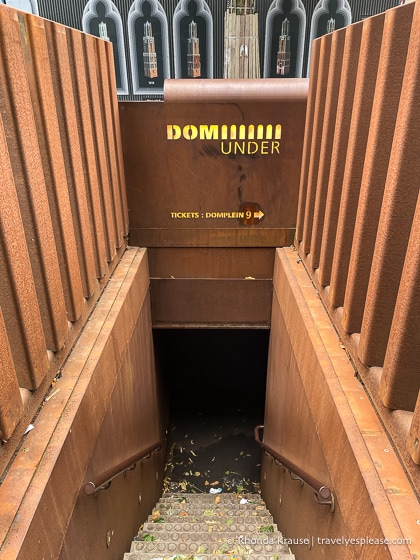
During the video, we got to see reconstructions of the Roman castellum, the Gothic cathedral, and other structures that once stood above us. My favourite part of the audiovisual portion of the tour came partway through our underground exploration when we were shown a recreation of the massive storm that reduced the cathedral’s nave to rubble in 1674, creating an open space that is now the Domplein.
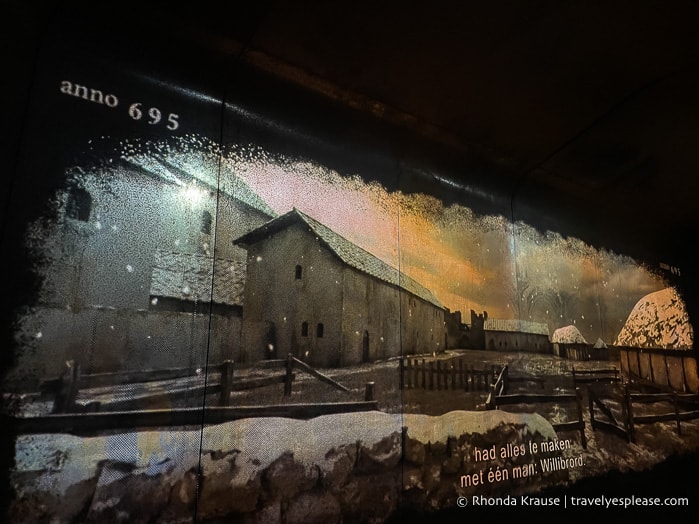
After the video was over, we were free to walk the circuit around the ruins, exploring the rubble with our flashlights. At first when I shone my light on objects I wasn’t hearing any commentary, but that’s because my light wasn’t hitting a sensor. Once I figured out what the sensors looked like, and that they were only by certain objects and not everything, the experience was much better!
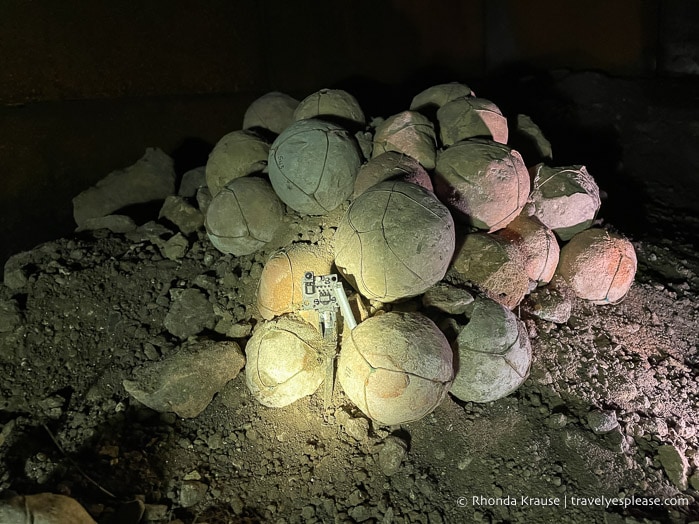
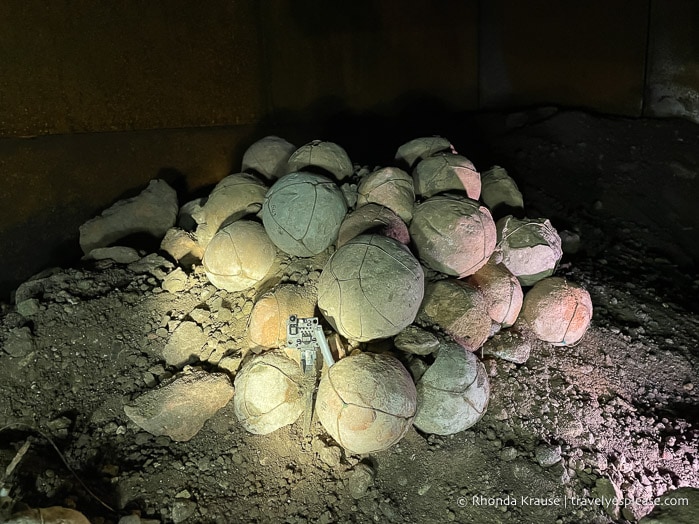
During my archaeological exploration, I saw ancient walls, crumbled columns, toppled spires, and some decorative elements that adorned the cathedral’s nave.
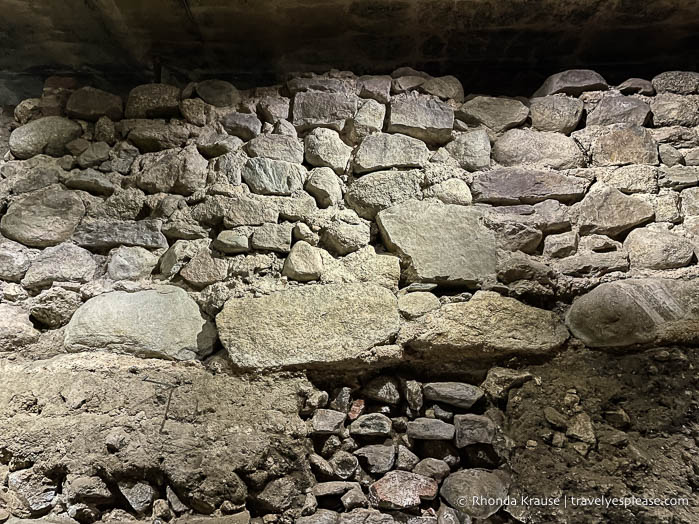

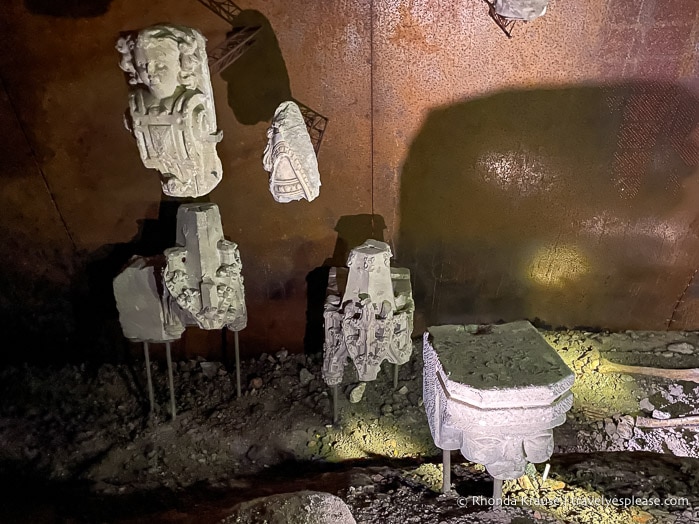
One of my favourite discoveries was the animal footprints preserved in stone. One looked like a cat print and the other a dog print.
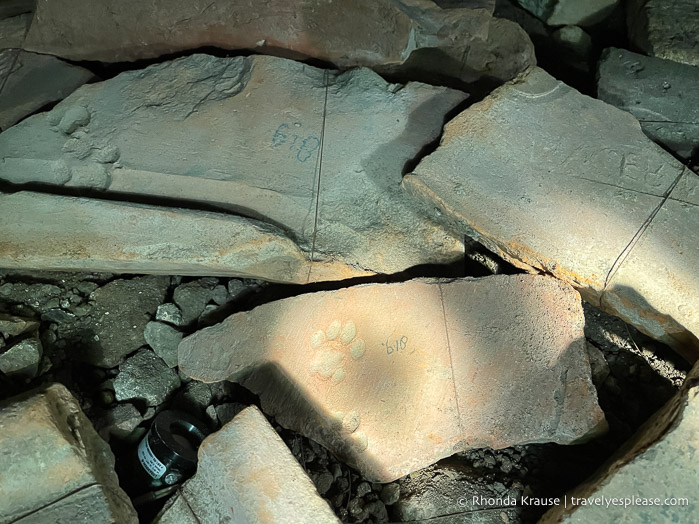
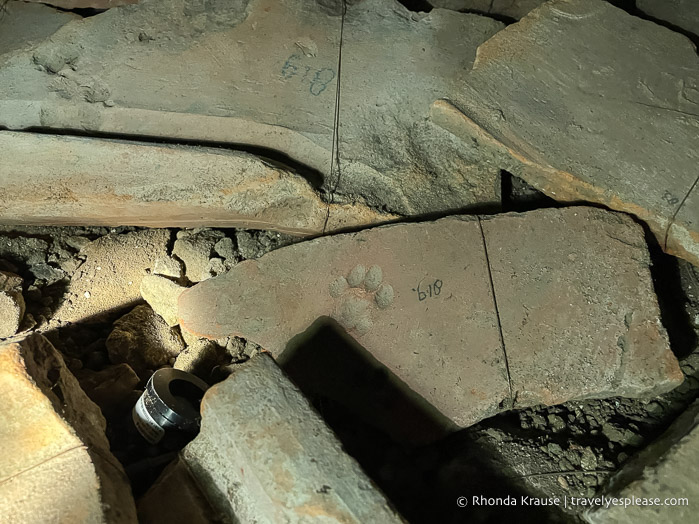
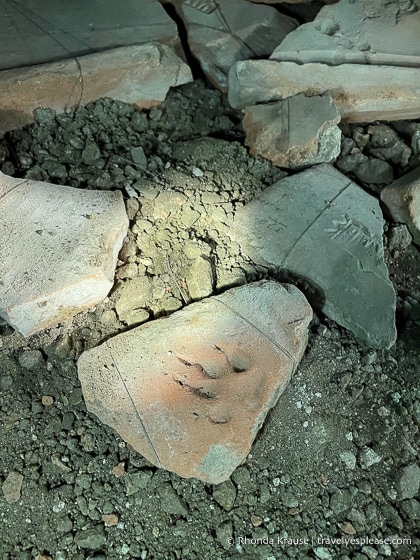
Another highlight was the collapsed burial vault and human skeleton lying by a headstone.
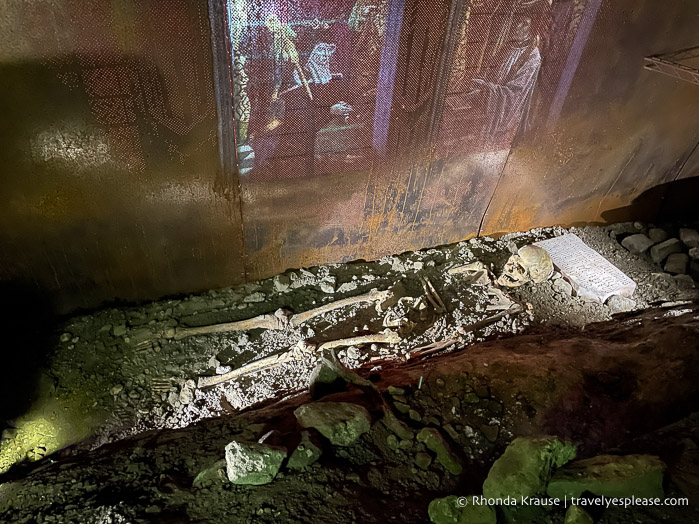
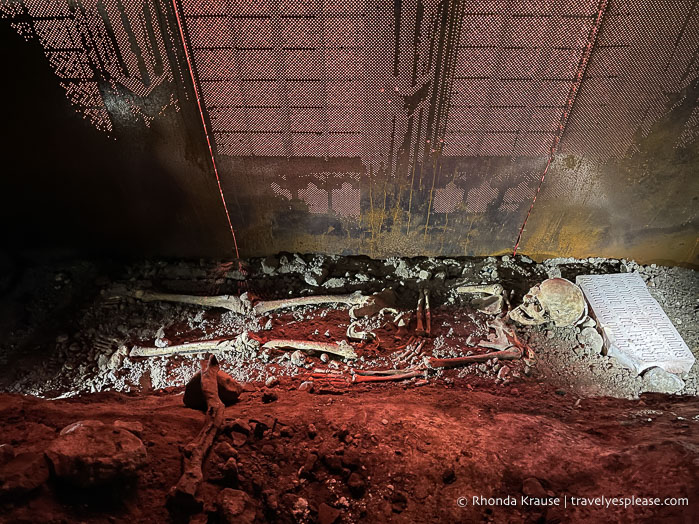
Near the end of the circuit, there were some architectural elements in a pile of rubble, including what appeared to be some gargoyle water spouts. My guide told me that this part of the DOMunder is a bit “staged”, whereas other artifacts were left as they were found during excavation.
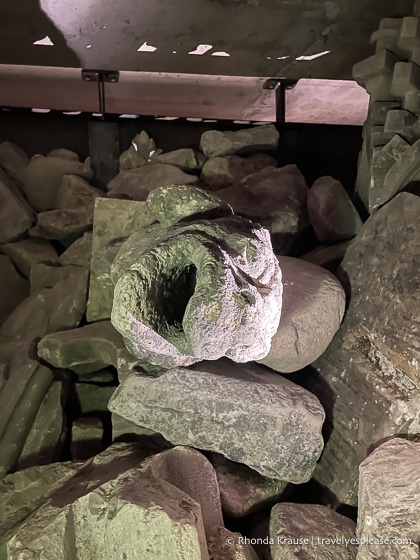
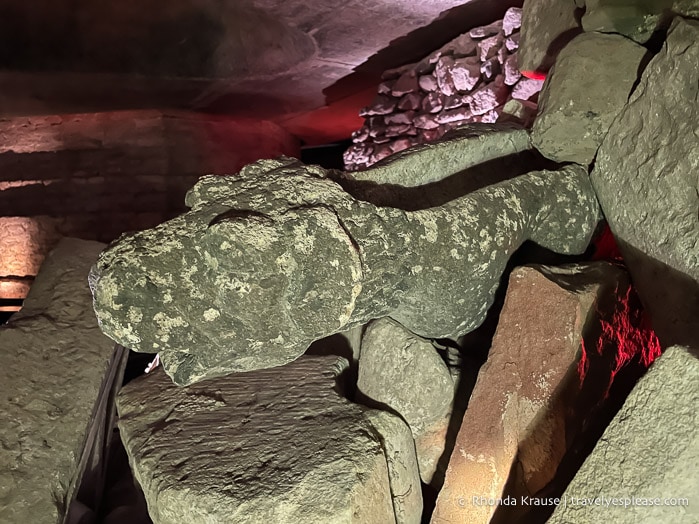
After finishing the route, I handed in my flashlight and exited up the staircase back to the Domplein feeling impressed by what was hidden just under my feet.
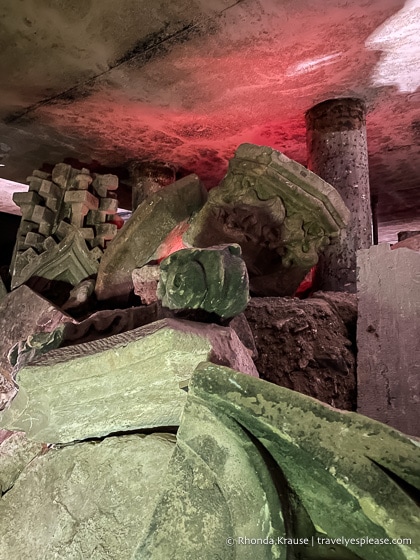
Final Thoughts- My DOMunder Review
The DOMunder Discovery Tour was the most unique experience I had during my one week in the Netherlands.
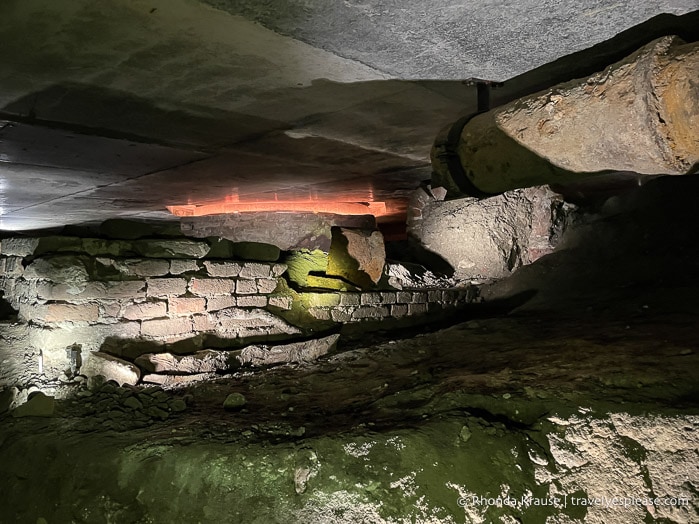
I love archaeology and ruins, so thought it was neat to visit an underground excavation area. Getting to use a flashlight to search the ruins for historic items was a fun novelty and the recorded stories about them were interesting too. Overall, I’d describe the experience as part treasure hunt part audio tour.
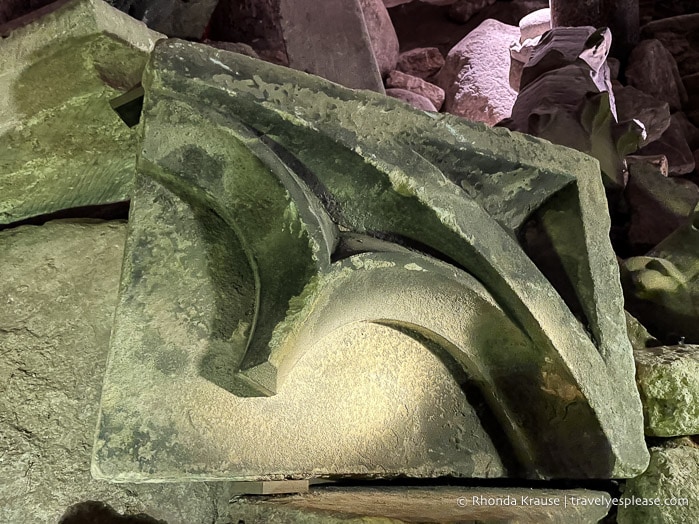
The introductory lesson from the guide was great as well. His presentation was thorough, but not overwhelmingly detailed to drive me to boredom. The pictures and other visual aids helped make the information engaging.
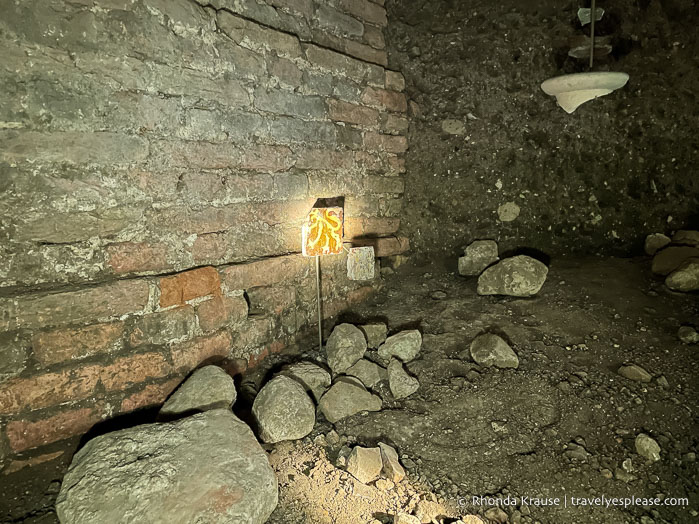
One thing I would change about the DOMunder experience is the audiovisual presentation. It was divided into two parts and the second bit about the windstorm started when we were halfway around the route. All of a sudden we heard storm sounds and voices and were wondering what was going on. The guide had to quickly usher everyone back to the starting point to watch the video about the powerful winds that collapsed the nave. I would have preferred it if all the videos were shown at the start.
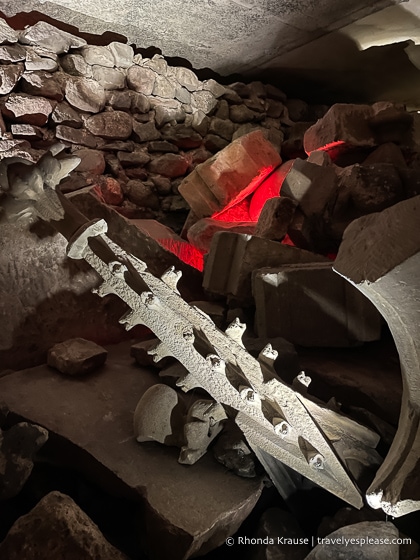
I enjoyed visiting DOMunder in Utrecht and thought it was an entertaining and interactive way to learn about the history of the city and the Domplein while admiring archaeological finds.
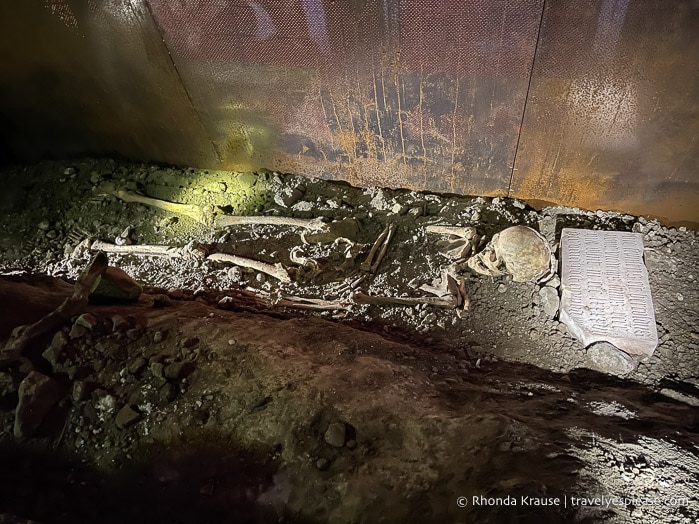
Tips for Visiting DOMunder
Location: DOMunder is located in Utrecht’s Domplein (the cathedral square).
Tickets: DOMunder tickets can be bought at the Tourist Information Centre at Domplein 9, across from the Dom Tower. Tickets can also conveniently be bought online here. When you purchase a ticket you will have to pick your tour time.
- It’s recommended to buy your ticket a few days in advance if you have a specific time you want to go, especially during the summer season. I tried to buy a same-day ticket and couldn’t get the time I wanted but was able to get one for the next day.
Tour Length: The entire experience takes about 75 minutes. I did the last tour of the day and it went for about 90 minutes since they didn’t have to rush for the next group.
Languages: The DOMunder Discovery Tour is available in English, Dutch, and German.
Other Tips: You are not allowed to bring bags and purses into the ruins. There are lockers available to store your belongings during the tour.
- DOMunder is recommended for ages 8 and above.
- There is limited accessibility for people with disabilities. Please contact the venue directly for visitation options.
Information was correct at the time of publishing, but can change without notice. Please confirm directly with service providers.
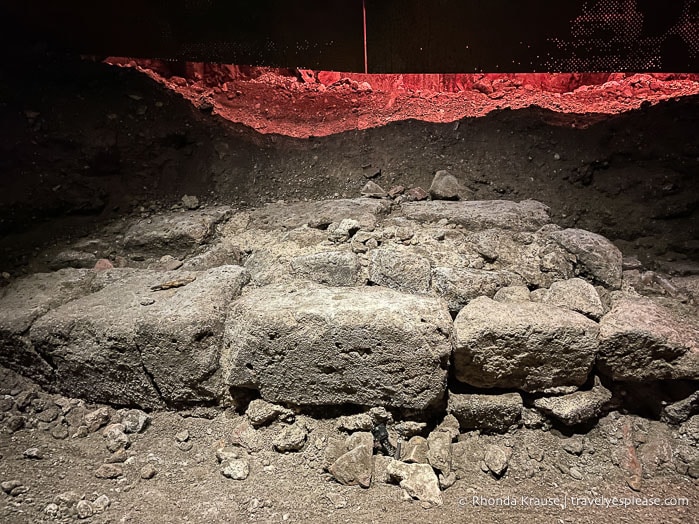
Accommodations in Utrecht
For your convenience, here is a list of hotels in Utrecht. Please consider booking your Utrecht accommodations through the included link. It costs nothing extra and helps support this website. Thank you!
